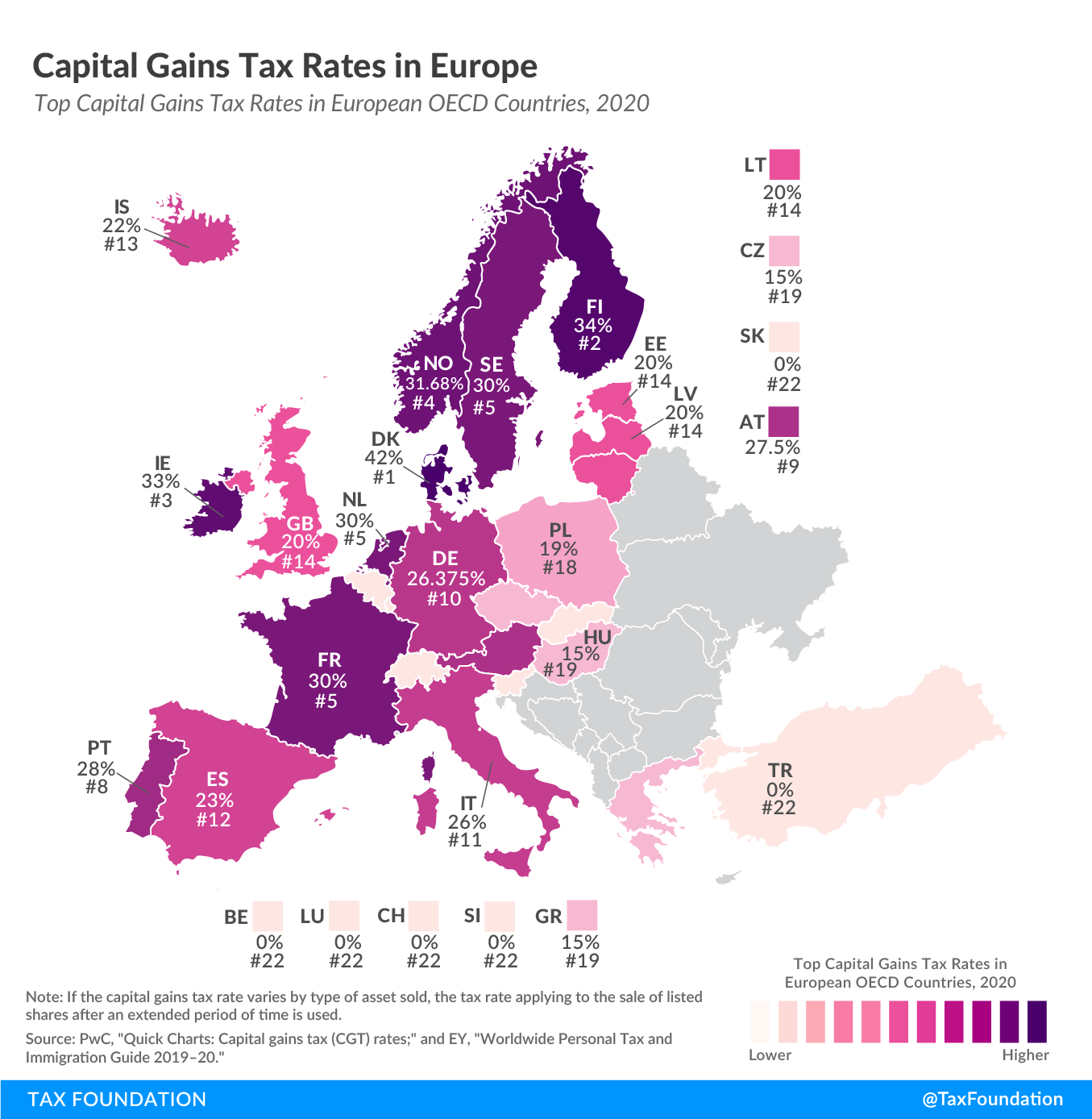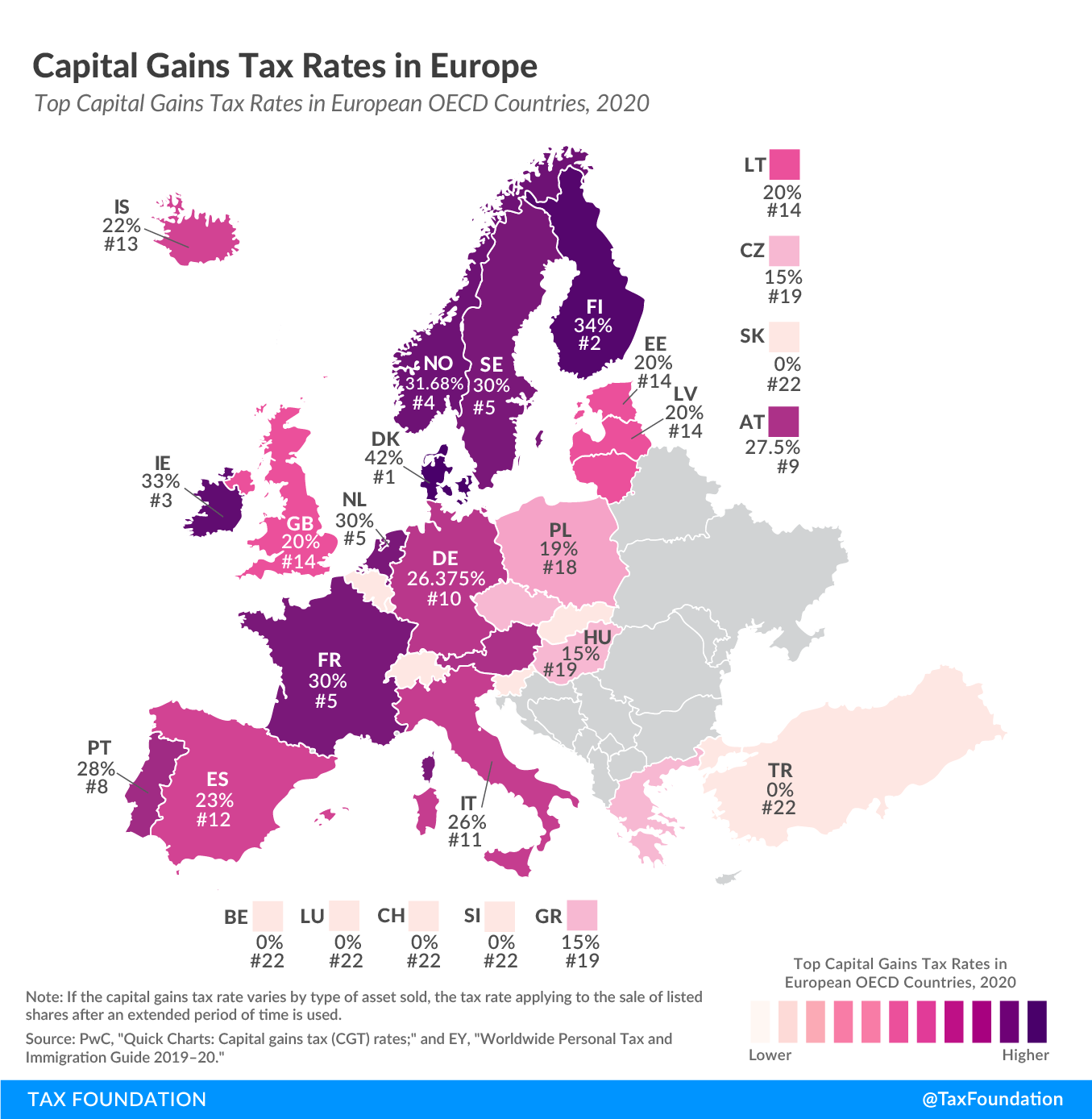Tax Policy – Capital Gains Tax Rates in Europe
In many countries, investment income, such as dividends and capital gains, is taxed at a different rate than wage income. Today’s map focuses on how capital gains are taxed, showing how capital gains tax rates differ across European OECD countries.
When a person realizes a capital gain—that is, sells an asset for a profit—they face a tax on that gain. The capital gains tax rates shown in the map are expressed as the top marginal capital gains tax rates, taking account of imputations, credits, or offsets. If the capital gains tax rate varies in a country by type of asset sold, the tax rate applying to the sale of listed shares after an extended period of time is used.
Denmark levies the highest capital gains tax of all countries covered, at a rate of 42 percent. Finland and Ireland follow, at 34 percent and 33 percent, respectively.
A number of European countries do not levy capital gains taxes. These include Belgium, Luxembourg, Slovakia, Slovenia, Switzerland, and Turkey. Of the countries that do levy a capital gains tax, the Czech Republic, Greece, and Hungary have the lowest rates, at 15 percent.
On average, the European countries covered tax capital gains at 19.5 percent.
Source: Tax Policy – Capital Gains Tax Rates in Europe


